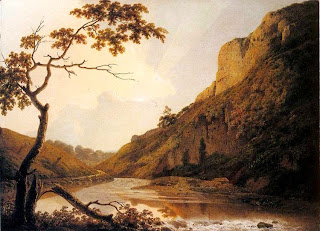Isabella reporting,
Yesterday I finally visited the delightful small exhibition at the Portsmouth Athenaeum that I first mentioned here. Cosmopolitan Consumption: New England Shoe Stories, 1750-1850 was exactly that - a collection of beautiful shoes, many with tantalizing glimpses into the lives of their long-ago owners.
Today no woman would think of preserving the old sneakers she wears while gardening; it's the shoes she wore to her wedding or other special event that are carefully tucked away in the closet. It was much the same with women two hundred years ago, which is why many surviving shoes in museums and historical societies tend to be of the costly variety, beautiful creations of brocade or silk that carried rich memories for their wearers.
The shoes shown above and right most likely belonged to Martha (Patty) Rogers (1762-1840), the youngest daughter of Rev. Daniel Rogers of Exeter, NH. With their small angled heels, these were the latest style in the 1780s, made by the London shoemakers Chamberlain & Sons and imported to America - proof that trading had once again resumed between the two countries with the end of the American Revolution. Now faded to a pale pink, the silk satin was once a brilliant cherry, as can still be seen on the tongue (the white padding is for modern display.) Imagine them worn with a set of glittery buckles, peeking out from beneath a silk gown and ready for dancing.
And Patty did dance. When these shoes were donated to the Portsmouth Historical Society by family descendants, the small wallet (purse), left, accompanied them. The wallet was likely made from a remnant of silk brocade dress fabric, and lined with more silk that's close to the original color of the shoes.
As charming as the wallet is, the real treasure was tucked inside: a tiny note, folded into an origami-like shape known at the time as a tulip - a special fold favored by lovers - with a handwritten message:
"–––Parkers compliments to Miss Rogers. Would be glad to wait on her this evening to a dance at Capt True Gilman's Friday 10 Oclock."
Did Patty meet with Mr. Parker at Capt. Trueworthy (Trueworthy!) Gilman's? Did they dance together? Was this Mr. Parker's first overture, or was there a long-standing romance between the two? Was the note carefully preserved, or absently tucked into the purse and forgotten?
Although the romance-writer in me longs for a happily-ever-after, it didn't happen for these two. The most likely author of the note was Nathaniel Parker (1760-1812). He later married another lady named Catherine Tilton, while Patty Rogers never wed.
Many thanks to co-curators Kimberly Alexander and Sandra Rux for the personalized tour, and assistance with this post. For more information about these shoes and many others, stayed tuned for Kimberly's upcoming book Georgian Shoe Stories From Early America (Johns Hopkins University Press, 2016.) In the meantime, please check out her blog, Silk Damask, for more fascinating fashion and textile history.
Above left: Silk Satin Shoes, Chamberlain & Sons, London, 1780s. Portsmouth Historical Society.
Right: Wallet, silk brocade from 1750s. Portsmouth Historical Society.
Lower left: Invitation to a Dance, probably mid-1780s. Portsmouth Historical Society.
All photographs copyright 2015 Susan Holloway Scott.

































 One of us --
One of us -- 


